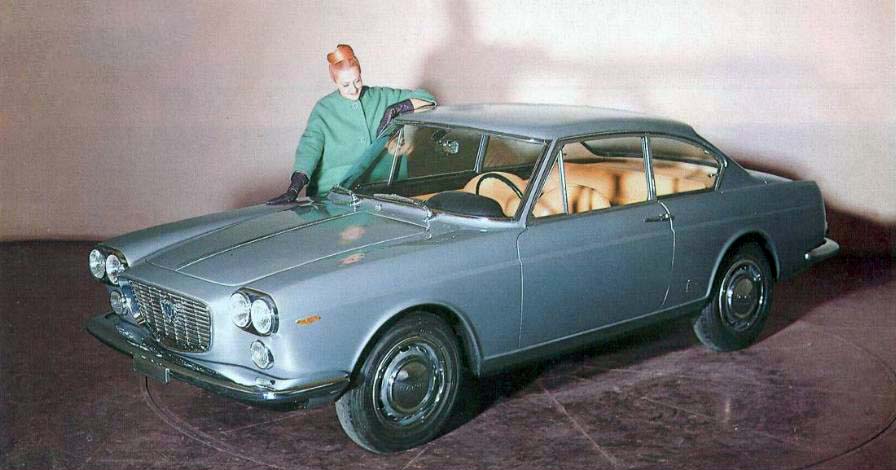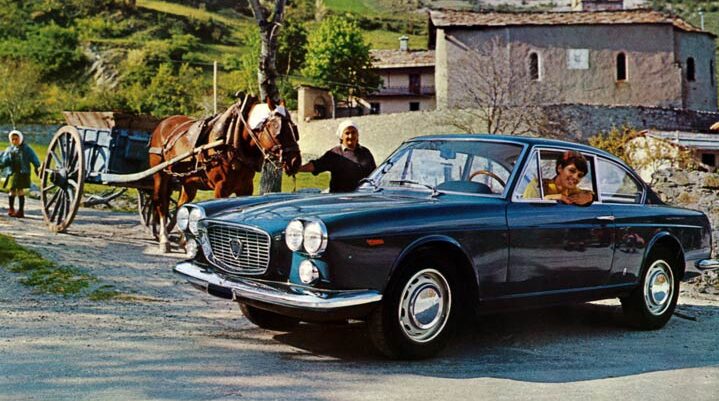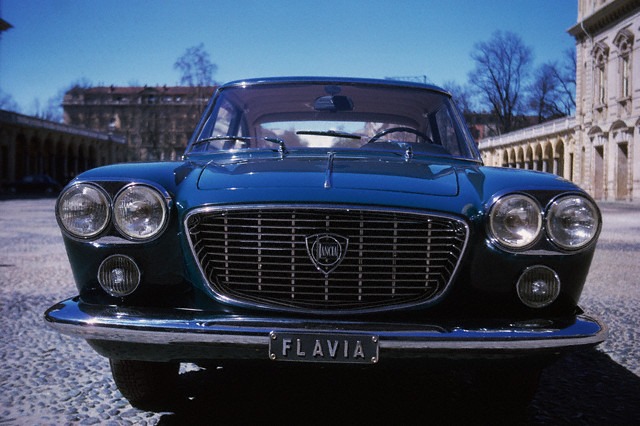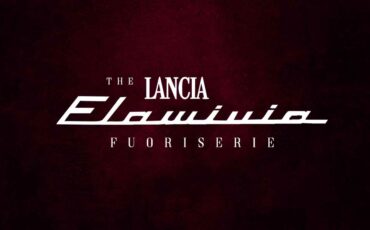The Lancia Flaminia “Fuoriserie”
The Lancia Flaminia was born as the Lancia flagship model of the 50’s and 60’s with the aim to replace the glories of the…










The Lancia Flavia Coupé designed by Pininfarina.
The Lancia Flavia Coupé: While the saloon could be criticised for its design, the coupé version, the work, like many Lancia coupés, of Pininfarina (who also handled the assembly of the model), received much praise from the outset. Presented at the Turin motor show in 1961, it is to be considered a perfect example of industrial creativity in its category and era. With a typically Italian three-box style, with a sloping pavilion associated with a low, sleek line, the Flavia coupé, despite having to take the place left in the range by the Aurelia B20, had strong similarities with Pininfarina’s larger Ferrari 250 GT. In other words, a perfect example of fusing the concepts of elegance and sportiness without going over the top. The list price (Quattroruote, December 1961) was 2,145,000 lire, plus 76,000 lire for road registration and an annual road tax of around 38,000 lire. The radio was an optional extra (from LIT 65,000 to LIT 122,000), while the three-spoke Nardi steering wheel was standard, as were the four disc brakes. The delivery time, according to Quattroruote magazine, was as much as a year and a half, as the large, modern Lancia plant in Chivasso (where the younger sister Fulvia was later built) was not yet operational. The mechanicals were closely derived from those of the saloon, so they were absolutely avant-garde for the period, with some power differentiations: for example, the first 1500 cm³ version mounted two vertical Solex double-body carburettors in place of the single Weber double-body carburettor in use on the saloon, which allowed it to deliver the CUNA 90 hp instead of the 78, with a higher engine torque at higher revs, and a top speed of 166 km/h (according to Quattroruote). The chassis was also derived from that of the saloon, from which it was shortened by 17 cm. The overall length of the car was 4.485 m, while the weight was 1160 kg. Marketing began in July 1962, to cease in 1964 after only 3,725 examples had been produced. This version was criticised for its carburetion, which was “difficult to fine-tune”, and torque “only expressed at high revs”, but which ensured that it was a much-loved sports car: to this end, the Turin-based manufacturer introduced the so-called “1005 variant”, with an engine increased to 1727 cm³ and CUNA 92 hp with more torque, elasticity and smooth running, produced with the active collaboration of the Nardi company and also fitted to some saloons. In any case, given the difficulty in tuning caused by the two carburettors, a single twin-body carburettor was installed on many of the last examples of the Coupé 1500. The Flavia coupé 1800 was presented at the 1963 Frankfurt Motor Show: with a list price of 2,360,000 lire, it had a 1.8-litre single-carburettor engine, reached a power output of 92 hp CUNA and pushed the car, according to Quattroruote’s test at the time, up to 173 km/h, slightly more than the same top speed as the previous versions, but achieved with a more even torque curve and hence elasticity. Two years later the German Kugelfisher fuel-injected version of the ‘1800’ debuted, which was an optional extra at a price of 250,000 lire and increased power to an impressive 102 DIN hp and 180 km/h top speed, while at the same time there was a slight update to the interior. The single-carburettor ‘1800’ was produced in 13,418 examples, while its fuel-injected sibling (price with road tax around 2,700,000 lire) in 2,150 examples. At the 1969 Geneva Motor Show, the Lancia coupé was presented in a partially redesigned guise, with tighter, more modern lines and a new interior. Also new was the engine, increased to 2 litres (115 hp DIN, 185 km/h). Six months later followed the ‘2000i’, with Kugelfischer mechanical fuel injection (124 hp DIN, 190 km/h), of which only 705 were produced, compared to 3,458 for the carburettor-powered ‘2000’. Finally from 1971, thanks to a revision of the distribution, cams and fuel supply that allowed higher torque at lower revs and the adoption of the 5-speed gearbox, performance improved again with the last version of the Flavia simply called the Lancia 2000 coupé and which should in fact be considered as a different heir model, both in the carburettor version and then with the adoption of the then highly advanced Bosch D-jetronic electronic fuel injection for the 2000HF (it topped out at 200 km/h), versions that also underwent a thorough restyling of the interior with the extensive use of wood in place of the Flavia’s black plastic as well as important standard accessories (ZF variable-action hydrodrive, headrests, alloy wheels) and optional air conditioning and athermic windows. Unlike many other Lancia cars, the Flavia coupé Pininfarina was never considered a thoroughbred sports car, but rather a fast long-distance grand tourer, appreciated for its particular driving pleasure, the result of a combination of boxer engine and low centre of gravity. Nevertheless, it turned out to be the first Lancia to be used in Cesare Fiorio’s fledgling Squadra Corse HF, in the company’s official racing outfit until the arrival of the lighter Fulvia HF. This brief interlude gave the Flavia (which reached 160 hp in the HF race version) many sporting satisfactions, including victory in the Rally dei Fiori di Sanremo in 1962, beating the then very strong Alfa Romeo Giulietta TI and 2nd and 3rd place overall in the 1966 Monte Carlo Rally, as well as excellent results on the track. A ’64 Lancia Flavia coupé managed to complete three tough long-distance races: the Peking-Paris in 1997, the Around the World in 80 Days in 2000 and the Inca Trail (25,000 km, Rio-Lima-Ushuaya-Rio) in 2001. Prepared by Ezio Feliciani and piloted by Roberto Chiodi, the Flavia was donated to the Bonfanti Museum.

The Lancia Flaminia was born as the Lancia flagship model of the 50’s and 60’s with the aim to replace the glories of the…
Missing or wrong informations?
Carrozzieri-Italiani.com relies on thousend of users who help to populate the database. We do not guarantee the accuracy of the informations. Contact us if you want to contribute.
